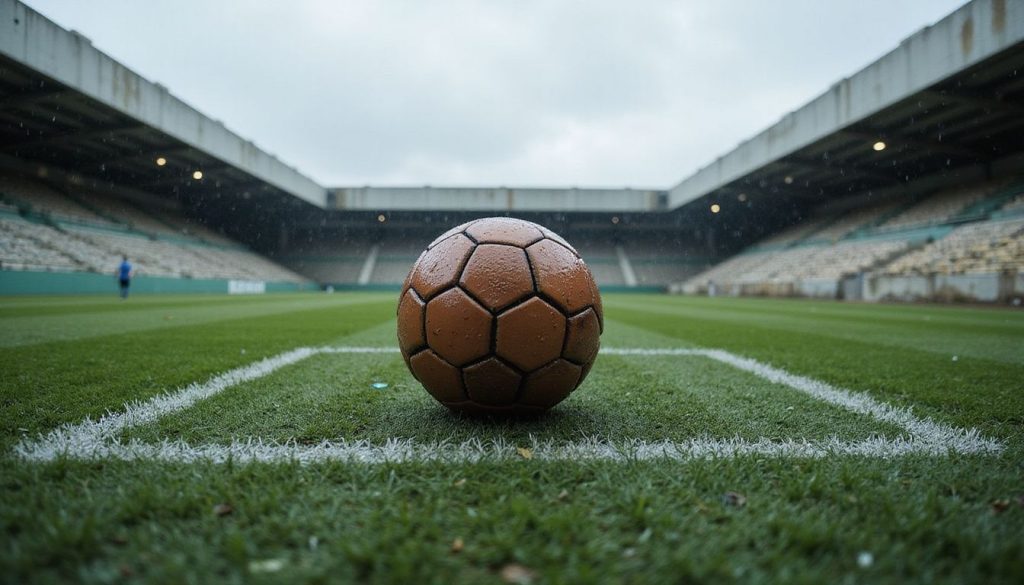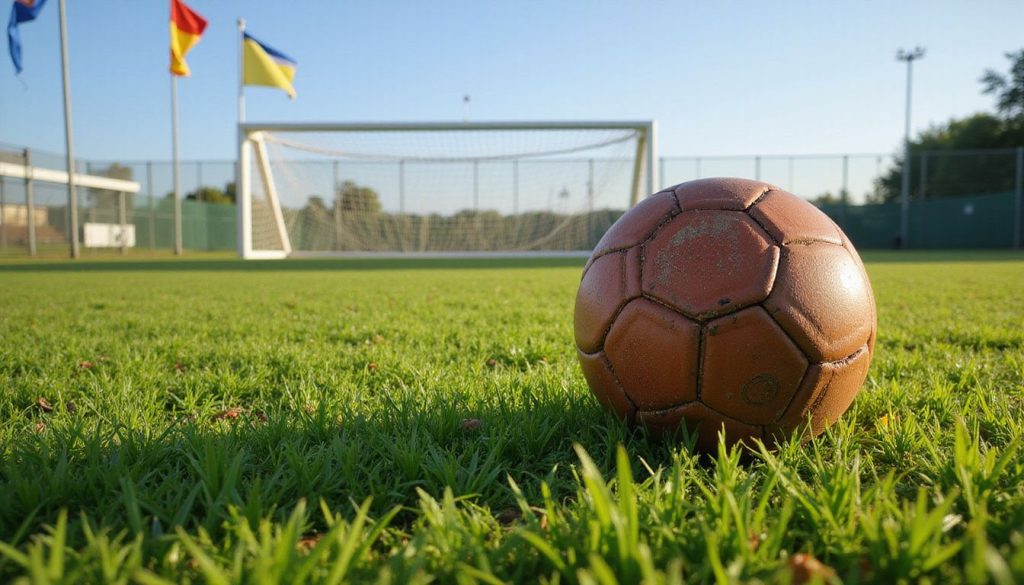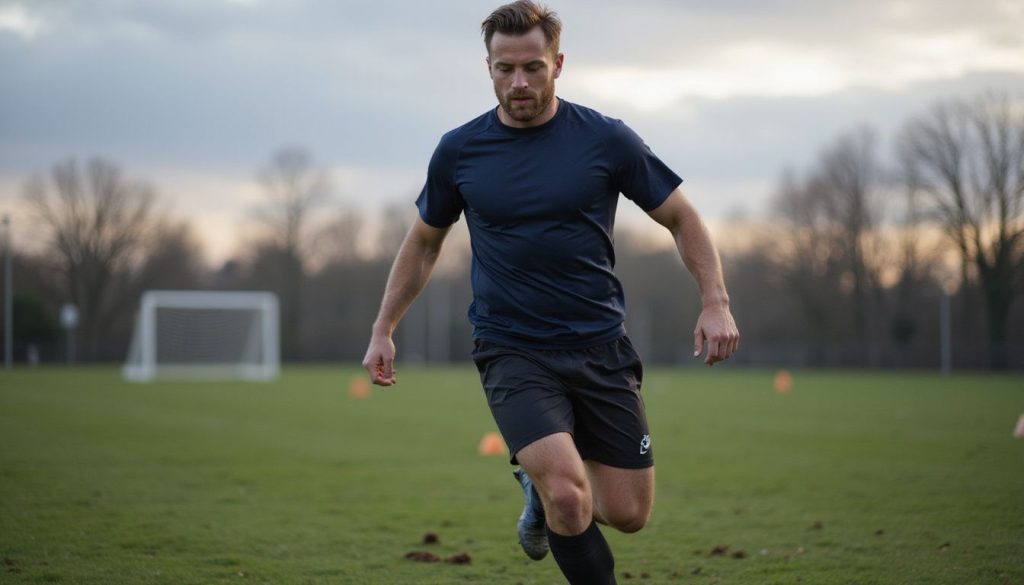Best Football Cleats For Grip
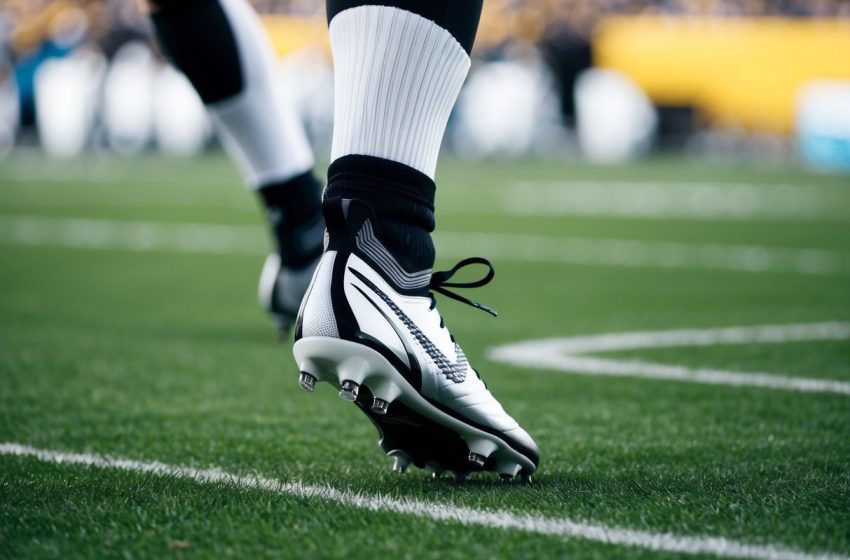
Best Football Cleats for Grip: Top Picks for Ultimate Traction on the Field
If you play football, you know how important grip is when choosing your cleats. The best football cleats for grip use special stud patterns and durable materials to keep you balanced and secure on the field. This means you can stop, start, and change direction quickly without slipping.

Finding the right pair doesn’t have to be confusing. Some cleats are designed with longer and fewer studs for strong traction, while others use unique shapes or rubber grooves to help you keep your footing. Picking the right grip can help you play your best game, whether you’re running down the field or holding the line.
Top Features That Enhance Grip in Football Cleats

Grip is one of the most important qualities in a football cleat. Good grip comes from several features, including how the outsole is built, the design of the studs, and the materials used in the upper.
Outsole and Stud Configuration
The outsole is the bottom part of your football cleat that touches the ground. A well-designed outsole gives you more grip and keeps you stable on different surfaces. Studs, also called cleats or spikes, come in different shapes and lengths.
Stud Types:
| Type | Best For | Features |
|---|---|---|
| Conical | Quick changes | Even pressure |
| Bladed | Straight-line speed | Sharp grip, cuts |
| Mixed | All-around use | Combines benefits |
High-top designs can also support your ankle, which keeps your foot steady during cuts. If you play on turf, look for shorter studs. Longer studs are better for natural grass. Always check that the studs fit your playing surface to avoid losing grip or feeling uncomfortable.
Traction Technology
Brands keep making new traction systems to help you stick to the field. Some cleats use TPU cleat plates, rubber zones, or special stud shapes. Nike, for example, has used a “Force Savage” plate for more grip, while Adidas applies its own molded and patterned stud plates.
Modern cleats sometimes have a split-sole design, meaning the front and back act separately. This helps keep your balance during fast moves. Other cleats have flexible grooves to allow your foot to move more naturally, raising comfort while keeping traction.
Some brands add additional rubber or textured patterns in high-wear areas. These features help prevent slips and boost your grip as you sprint or change direction quickly.
Materials and Upper Construction
The materials in your cleat’s upper, like synthetic leather and mesh, play a big role in grip and comfort. Synthetic leather is popular because it’s lightweight, water resistant, and keeps a snug fit. A tight fit means the cleat doesn’t slip around your foot, so you stay in control.
Some uppers use grippy textures or coatings, which can help keep the ball from sliding on your foot during play. Padding along the ankle and tongue can add to the overall comfort, making it easier to keep your foot planted and steady.
Lacing systems also matter. A well-designed lace pattern gives a secure, custom fit. This reduces foot movement inside the shoe and raises the confidence you have in every step.
Best Football Cleats for Grip in 2025
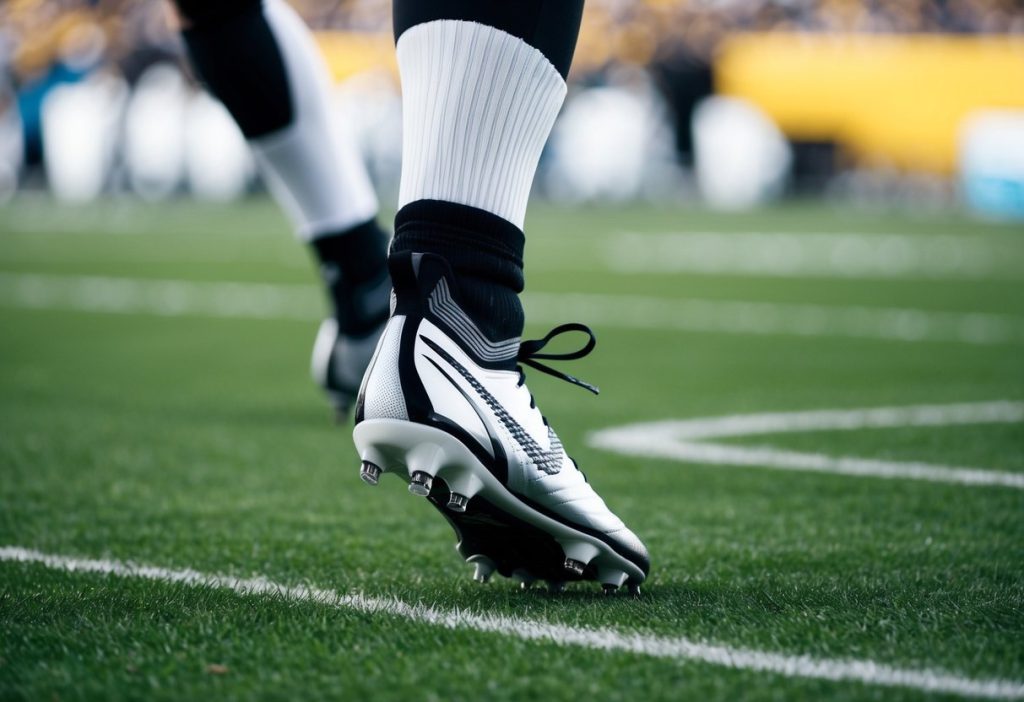
When choosing football cleats for grip in 2025, you’ll find top choices from Nike, adidas, New Balance, and Under Armour. Features such as stud pattern, sole materials, and traction technology are key factors that help you stay stable and confident on the field.
Nike Football Cleats
Nike has continued to lead with its football cleats, focusing on traction, fit, and new technology. The Nike Phantom GX 2 Elite and Nike Phantom Luna 2 Elite are popular for their reliable grip. Their stud designs use computer-generated patterns that help you dig into natural and artificial grass.
The Nike Tiempo Legend 10 Elite stands out for both grip and comfort. Its outsole provides stability, especially when making quick turns or sudden stops. Many players like how well the Tiempo fits different foot shapes while still giving solid traction.
Nike uses special rubber and lightweight materials in the outsole. This helps prevent slipping and allows fast movements. The tight lacing and knit uppers also keep your foot locked in place, which reduces the risk of sliding inside the shoe.
Nike cleats like the Vapor Edge 360 Pro 2 further improve grip with edge studs and a flexible plate that moves with your foot. These details make a big difference for players who depend on quick cuts and changes in direction during a game.
adidas Football Boots
adidas football boots are trusted by many athletes for their stable grip. The adidas Predator 25 Elite FT is known for its rubberized sole and aggressive stud layout. This model helps you plant your foot firmly, even on wet grass.
The adidas Copa line features soft leather uppers and conical studs, which balance grip with comfort. Players who play midfield or need to stay balanced in tight spots often choose Copa boots for this reason.
adidas uses its own traction control systems like ControlFrame on certain models. This technology helps with quick acceleration and stops by keeping your foot stable. It also supports your arch and heel to prevent slipping inside the shoe.
For players needing extra grip, adidas offers both firm ground and artificial ground options. That way, you can pick the right stud type for your main playing surface, which helps reduce slipping and injuries.
New Balance Grip Models
New Balance has made a name with football cleats that offer excellent grip and comfort. Their modern cleats use nylon soleplates and targeted stud arrangements. These features give you stable footing during fast runs or quick turns.
Shoes like the New Balance Furon and Tekela stand out for their traction on both grass and turf. The Furon’s directional studs give you a good push-off with each step. The Tekela line uses a unique underfoot design to help you dig in while changing directions.
New Balance focuses on fit and lockdown. Their cleats use stretchy materials in the upper, so your foot stays secure as you play. This helps you move confidently without worrying about slipping inside the cleat.
Lightweight construction and a low-cut design are common in New Balance grip models. These choices reduce bulk while keeping close contact with the ground, making it easier to feel and use your grip.
Under Armour Football Cleats
Under Armour football cleats combine grip with durability. Their notable models, like the Under Armour Spotlight, are built with special soleplate patterns. They use bladed and conical stud mixes to help you grip both soft and firm surfaces.
Under Armour uses SuperFoam insoles. This material keeps your foot comfortable but also helps avoid inside slippage, especially when running at full speed. The upper materials focus on support so you stay steady during cuts and sprints.
Some Under Armour cleats feature custom lacing and ankle support. These elements keep your foot locked down and help deliver a stable feel, which is important for fast direction changes.
For athletes who need extra traction, Under Armour designs cleats with aggressive stud placement and high-traction rubber elements. This makes them a good choice if you want reliable grip across a range of field conditions.
Choosing the Right Cleats for Your Position

Football cleats give you the traction and control you need on the field. Picking the right cleats keeps you safe, boosts your performance, and matches the demands of your position.
Running Backs
As a running back, your role needs both speed and quick cuts. You have to move fast, change direction quickly, and break tackles. Good grip is key for fuel and balance, especially on wet or soft fields.
Look for cleats with a lightweight design and molded studs. Molded studs provide solid traction and help you keep control when you accelerate or dodge defenders. A snug fit around your foot increases your stability without feeling too tight.
Material: Synthetic uppers are common, as they are light but still supportive. Low-cut cleats offer more range of motion for your ankles, helping you sprint and cut effectively.
Top Features to Look For:
- Strong traction pattern
- Lightweight fit
- Flexible sole
Some popular options include Nike Vapor or Adidas Adizero lines, which are designed for speed and quick movement on the field.
Linemen and Defenders
If you play on the line or as a defender, you need sturdy cleats that offer high stability and protection. You push, block, and hold your ground, so the focus shifts from speed to support and grip.
Choose high-cut or mid-cut cleats with wider soles, which give more ankle support and help prevent injuries. These cleats often have extra padding and reinforced toes to shield your feet during contact.
Material: Leather or synthetic-leather uppers provide extra durability. Detachable studs can be helpful if you often play in soft or muddy conditions, as they improve grip and keep you stable.
Important Features:
- Strong ankle support
- Thick sole and wider base
- Reinforced upper
Brands like Under Armour and Adidas offer cleats designed for linemen, balancing heavy-duty materials with the steadiness you need for every play.
Performance on Different Playing Surfaces

Choosing the right football cleats depends a lot on the type of field where you play. Different surfaces like grass and turf can change how much grip and comfort you get from your cleats.
Grass Fields
Grass fields, especially natural grass, can be soft, firm, or even muddy. For the best grip, cleats with longer studs or detachable studs work well on these surfaces. The extra length helps dig into the ground, giving you stronger traction during cuts or sprints.
You should look for molded studs if you usually play on firmer, dry grass fields. Molded studs offer a balance between grip and comfort, so your feet don’t get sore after playing for a while.
If the grass is wet or muddy, detachable cleats allow you to switch to longer studs. This stops slipping and helps you keep good footing. Focusing on comfort is important too, because hard grass fields can be tough on your feet after a full game.
Turf Fields
Turf fields, such as artificial turf, are usually much harder and less forgiving than real grass. Here, cleats with shorter, rubber studs or special turf patterns are best for traction. These studs are spaced closer together, so they grip the tough surface without getting stuck.
Wearing traditional long-stud cleats on turf can lead to discomfort and even injuries. You might feel pressure points under your feet if the studs are too long or sharp. That’s why turf shoes or turf-specific cleats are made for better shock absorption and overall comfort.
Some turf fields can be slippery, so having a good pattern of rubber studs helps with cuts, starts, and stops. This reduces your risk of sliding and keeps your moves controlled and steady.
Care and Longevity of High-Grip Football Cleats
Taking care of your football boots helps them last longer and keeps the grip working well. Simple habits can help protect your cleats from damage and keep you performing your best on the field.
Cleaning and Maintenance
Dirt and mud can quickly build up on the bottom of your cleats. After every practice or game, use a soft brush to clean off debris from the outsole and studs. If your cleats are very dirty, use a damp cloth or mild soapy water, but avoid soaking them as too much water can harm the material.
Dry your football boots at room temperature. Don’t use direct heat, like a hair dryer or radiator, since it can warp or crack the soles. Remove extra moisture by stuffing the shoes with newspaper. For leather cleats, use a leather conditioner occasionally to keep the upper soft and prevent cracking.
Check the laces, insoles, and studs often. Replace worn-out parts to keep your boots comfortable and supportive.
Tips for Maximum Lifespan
Rotate between two pairs of cleats if you play or practice often. This gives each pair time to air out and fully dry between uses. Always unlace your boots when taking them off. Pulling them off by the heel can damage the shape and the heel counter.
Store your football boots in a cool, dry place. Use a shoe bag to protect them during transport, especially if you’re moving between games or practice sessions. Never leave cleats in a hot car, as high temperatures can weaken the glue and plastic parts.
If your boots have removable studs, tighten them regularly to prevent loss during play. For firm ground cleats, avoid using them on artificial turf or hard concrete, as this wears down the grip and shortens lifespan. Taking these steps helps your cleats stay in top condition and perform as intended.
Frequently Asked Questions
Finding football cleats with excellent grip can help you play with more confidence and control. The best options often depend on your position, playing surface, and personal preferences.
What are the top-rated football cleats for superior traction on the field?
Some of the most popular cleats for grip include the Nike Vapor Edge Pro 360, Adidas Adizero, and Under Armour Highlight MC. These cleats have specialized outsoles or studs that provide strong traction on both grass and turf.
Which football cleats do professionals recommend for the best grip on turf?
Many professionals choose cleats that have short, rubber studs or molded bottoms for turf fields. The Nike Vapor Edge Elite and Adidas Freak Carbon are two models often mentioned for their performance on artificial turf.
How do high top and low top cleats compare in terms of grip for football players?
Both high top and low top cleats can offer good grip on the field. High tops add more ankle support, which some players like for added stability, while low tops are lighter, which can help with quick movements. The grip mostly comes from the studs rather than the cut of the shoe.
What cleats should a youth player choose for the ultimate grip while maintaining speed?
For youth players, lightweight cleats with molded rubber studs are a strong choice. These provide solid traction without being too heavy, helping young players move fast and keep their footing.
Are there specific football cleats designed for wide receivers to enhance grip?
Yes, cleats made for wide receivers often have aggressive stud patterns for quick cuts and acceleration. The Adidas Adizero is a popular choice because it’s light and offers very good traction for running routes.
What factors should running backs consider when choosing cleats for the best field grip?
Running backs need cleats with a strong grip for cuts and sudden movements. Detachable studs or advanced molded patterns often work well. It’s also important to pick cleats that fit snugly for more control and stability.

